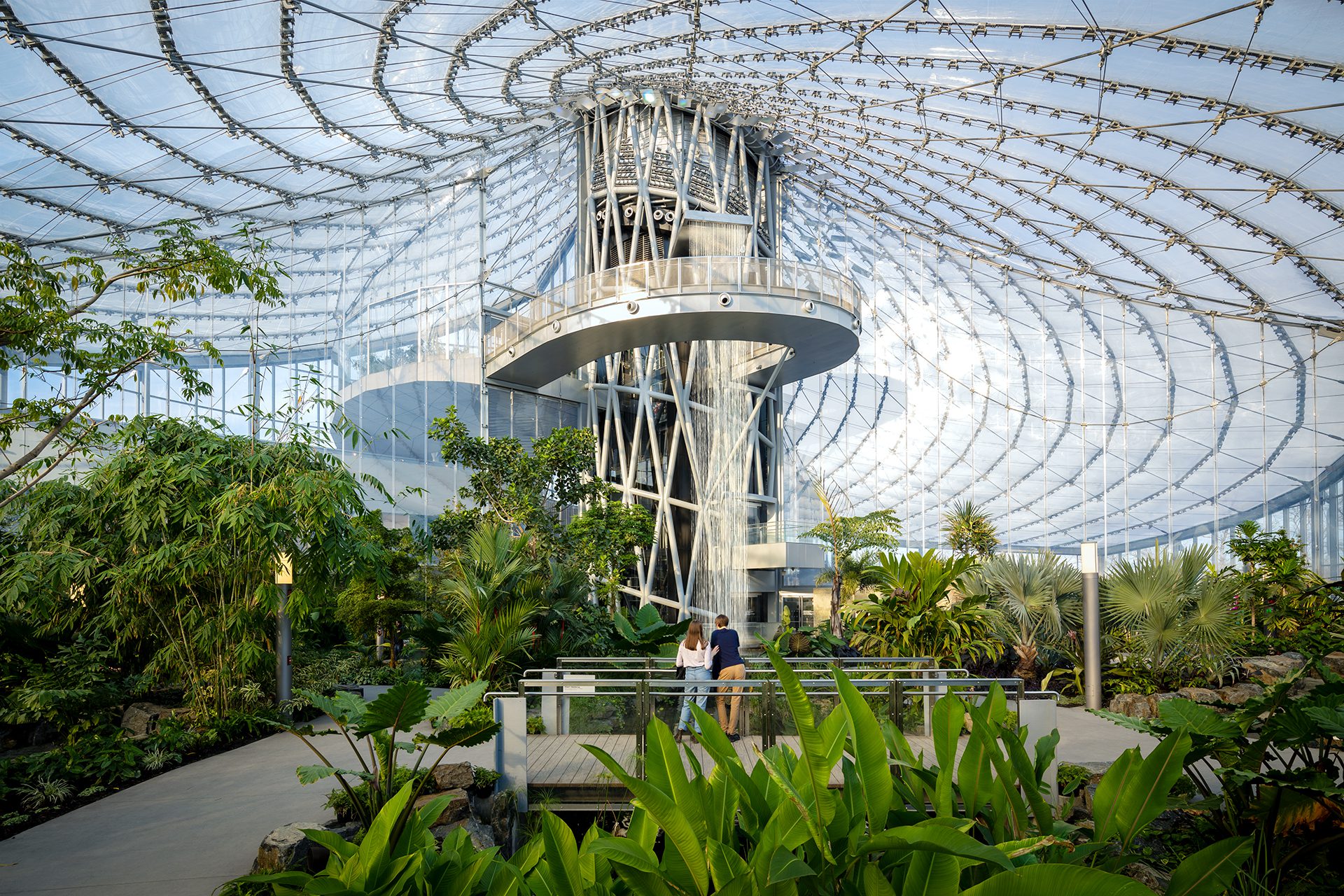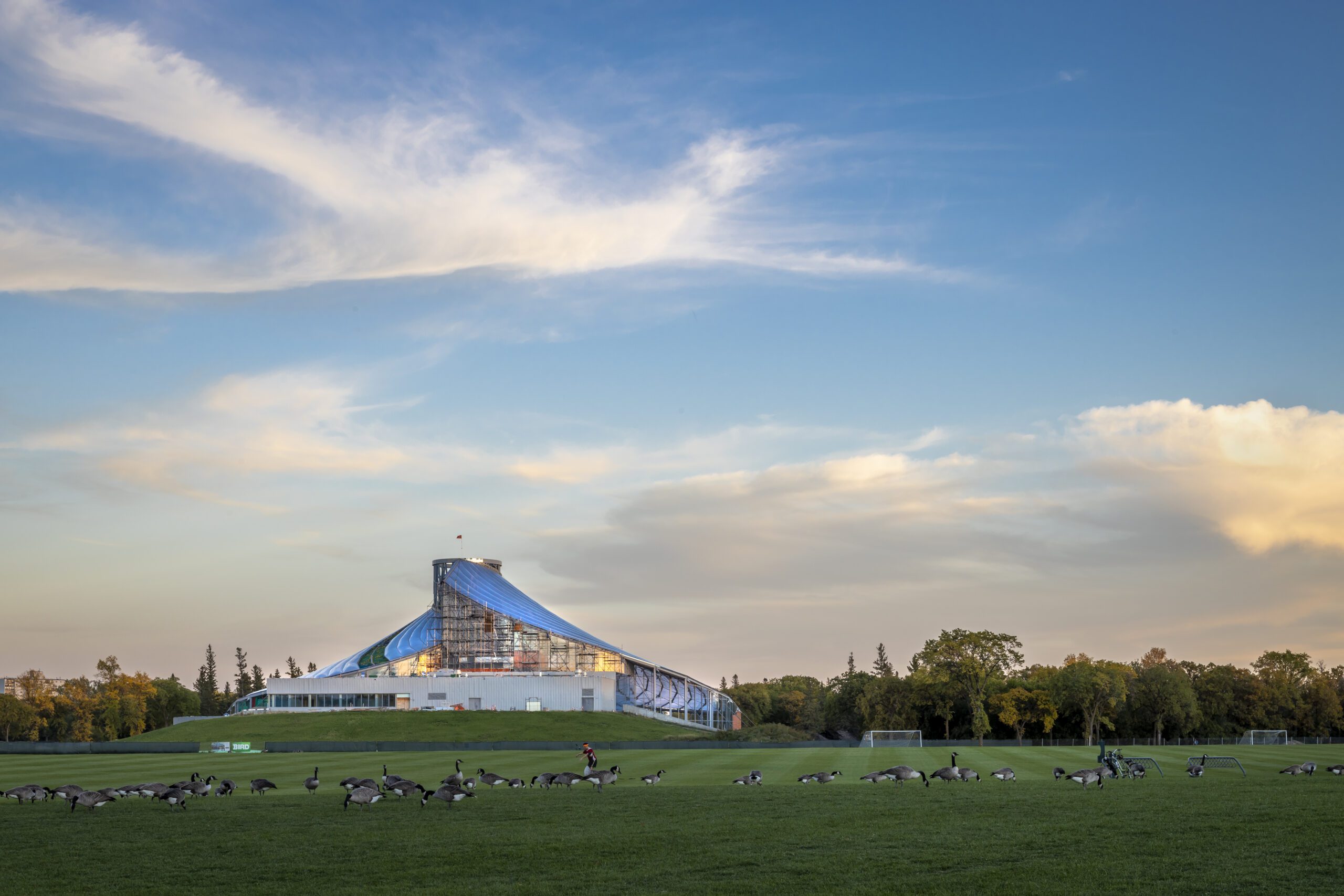Company:
Blackwell
Project Details
Fabric 1
Texlon ETFE Ethylene tetrafluoroethylene
Producer/Manufacturer:
Vector Foiltec
Primary Use:
Main Fabric
Engineer Name 1
David Bowick
Engineer Company 1
Blackwell
Design Name
David Bowick
Design Company
Blackwell
Architect Name
Mitchell Hall, Glenn MacMullin
Architect Company
KPMB
Fabrication Company
Vector Foiltec
Subcontractor Company
Bird Construction
Please describe the project specifications
The Leaf at Canada’s Diversity Gardens in Assiniboine Park in Winnipeg, Manitoba, has been described as a “horticultural sanctuary for the 21st century.” The new
84,400sf conservatory park building features interior biomes that celebrate the flora of Mediterranean and tropical climate zones, and a butterfly garden that allows guests to interact with a wide range of butterflies.
The most striking formal element of the Leaf is the sweeping spiral cable net of the roof. The cable net for the roof is a triple-layer spiral cable net supporting inflated pillows of ethylene tetrafluoroethylene (ETFE), a fluorine-based plastic with high corrosion resistance and strength over a wide temperature range. ETFE was chosen for the project for its high light transmissibility, particularly the plant-critical UV light, and economy, particularly when compared to glass. While ETFE is not “vision clear,” it diffuses light slightly in its passage through the membrane, so shapes and forms are easily distinguishable, and it reflects or absorbs only around 5% of the light. This is a critical factor when designing an indoor botanical garden at a latitude of 50° where the shortest day is barely more than 8 hours.
The functional objective of the roof was to minimize shading. A cable net was considered ideal because, with a light transmissibility of 95% in the membrane, most of the shading is structural shading. Cables, by virtue of their high strength can be dimensionally small when the form allows. ETFE as a system can accommodate large movements without a reduction in performance. A large deformation structural system allows each element to be fully utilized for strength minimizing its size.
ETFE, the foil, is extremely economical and the surface area of the foil is a minor contributor to the cost of the system. The design team learned that the cost of the system is largely in the extrusions, which form the boundaries and in the labour to install them. The key to an economical system, as well as the key to minimizing shading, is to minimize the boundary-to-surface ratio. This constraint suggested two possibilities: long parallel pillows and large discrete rhomboid or hexagonal “tiles” (similar to Grimshaw’s Eden Project in the UK).
A steel diagrid core forms the spine of the building. It contains the vertical circulation to access the event spaces and the Butterfly Garden, as well as housing the mechanical equipment for the inflation of the pillows and environmental controls for the building and biomes. The structure of the diagrid does the heavy lifting for the building, resisting the gravity and lateral loads for the roof and providing the tension ring function to anchor the cables of the cable net. Like the roof, the interior partitions separating the biomes consisted of ETFE foil supported by cables.
The cable net, diagrid, and supporting elements were modelled and designed using NDN, a large deformation non-linear finite element package specifically created for the engineering of membrane structures. The ETFE pillows themselves were a delegated design, with engineering completed by the contractor. The design team worked closely with the contractors to ensure that the cable net provided adequate torsional rigidity to maintain the stability of the pillows and extrusions under unbalanced load conditions.
The design team's approach to this truly one-of-a-kind fabric roof system provided the client with a graceful and organic solution to providing ample sunlight to an array of plant species within the conservatory.
Content is submitted by the participant. ATA is not responsible for the content descriptions of the IAA award winners.

Richard Seck

Richard Seck

Richard Seck

Richard Seck
 TEXTILES.ORG
TEXTILES.ORG






